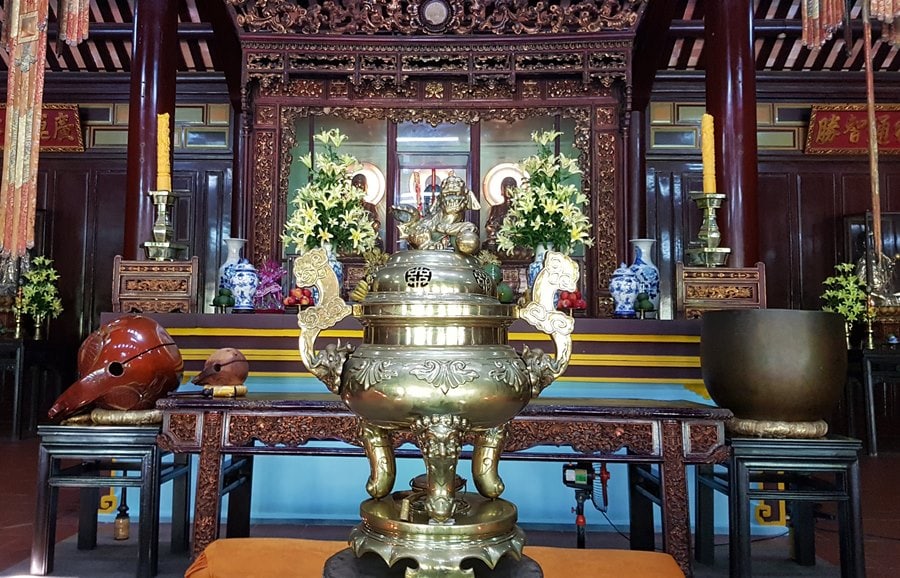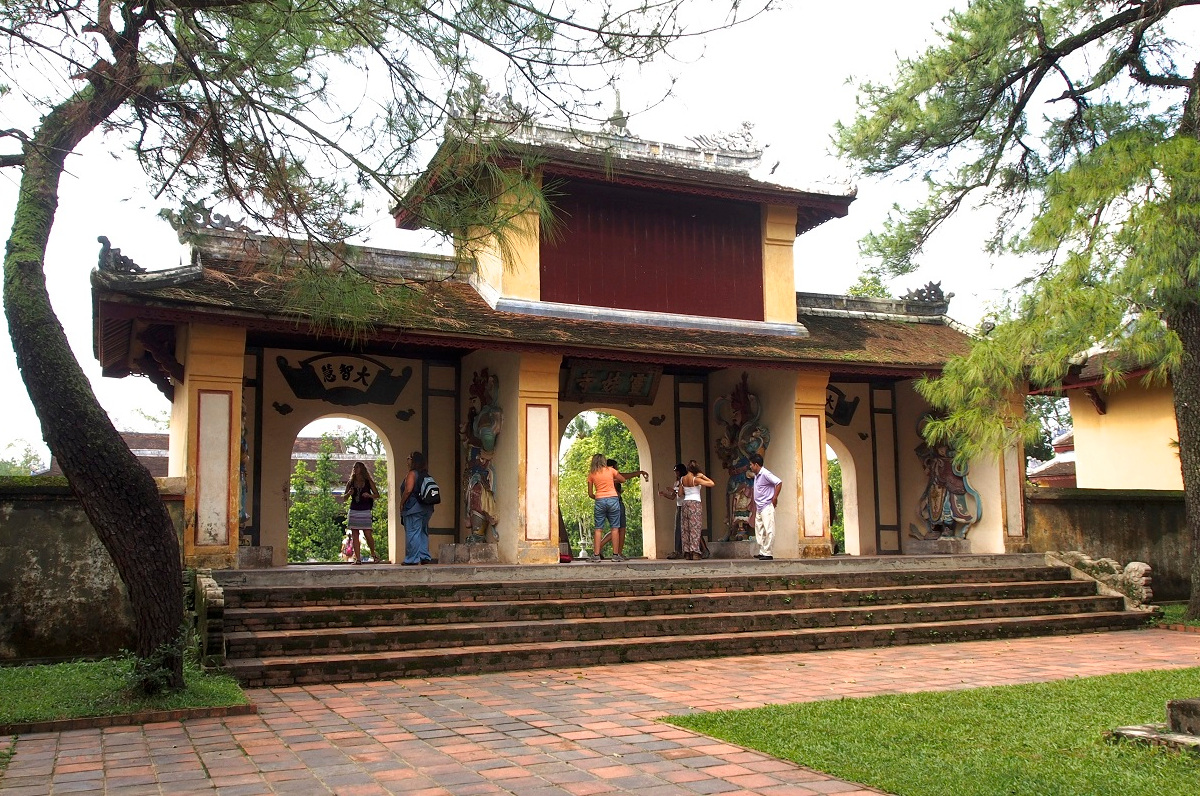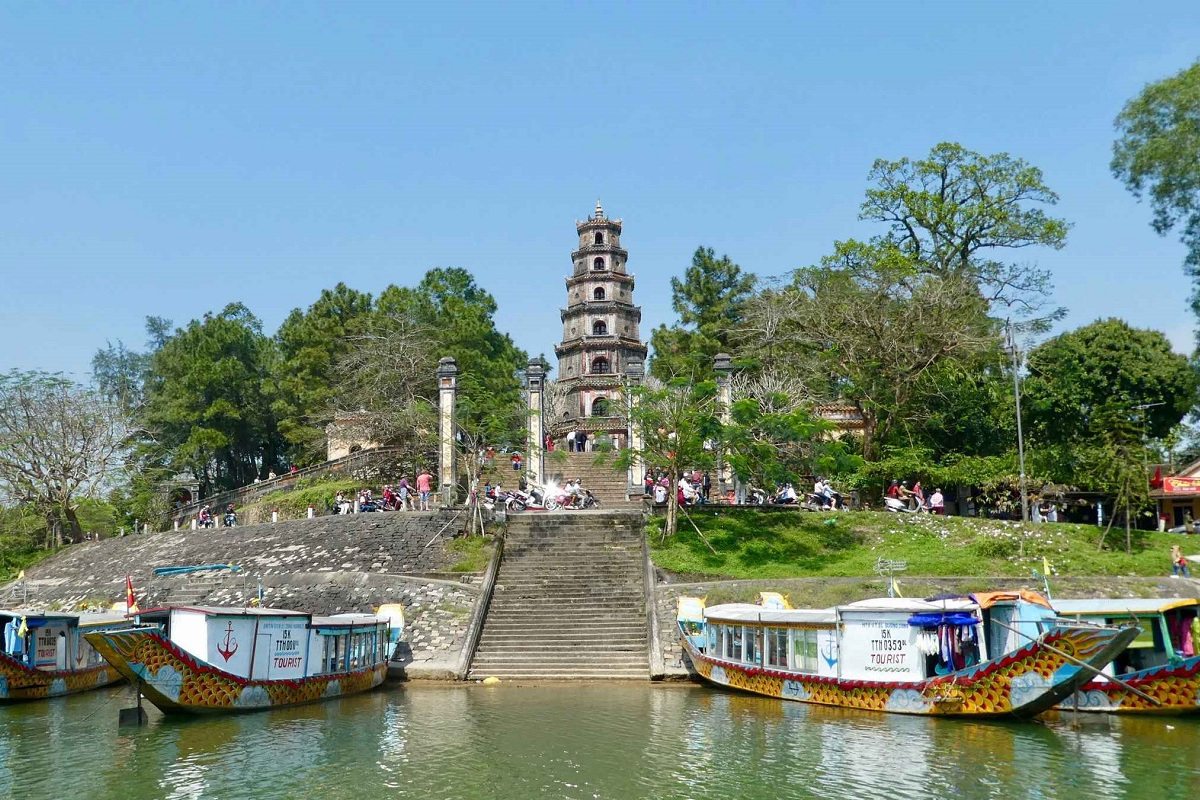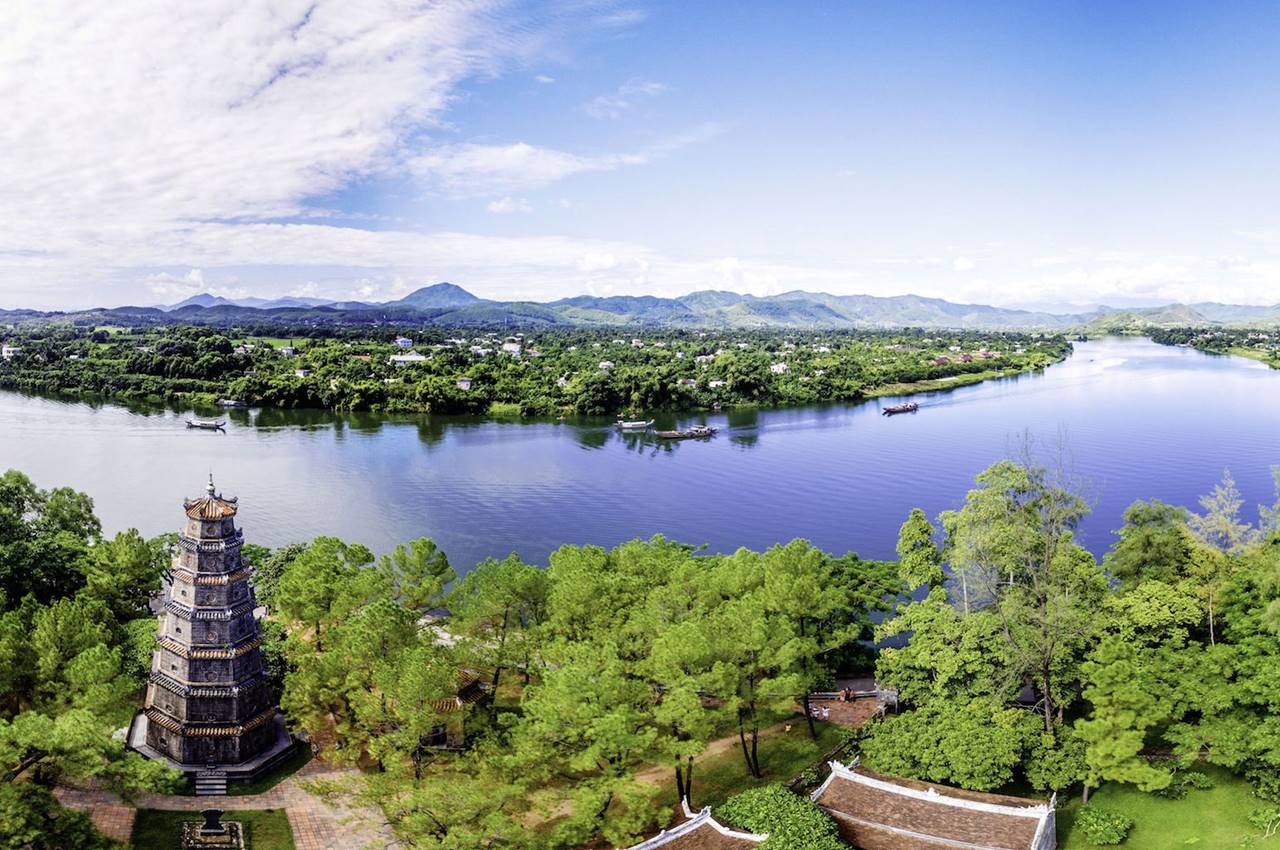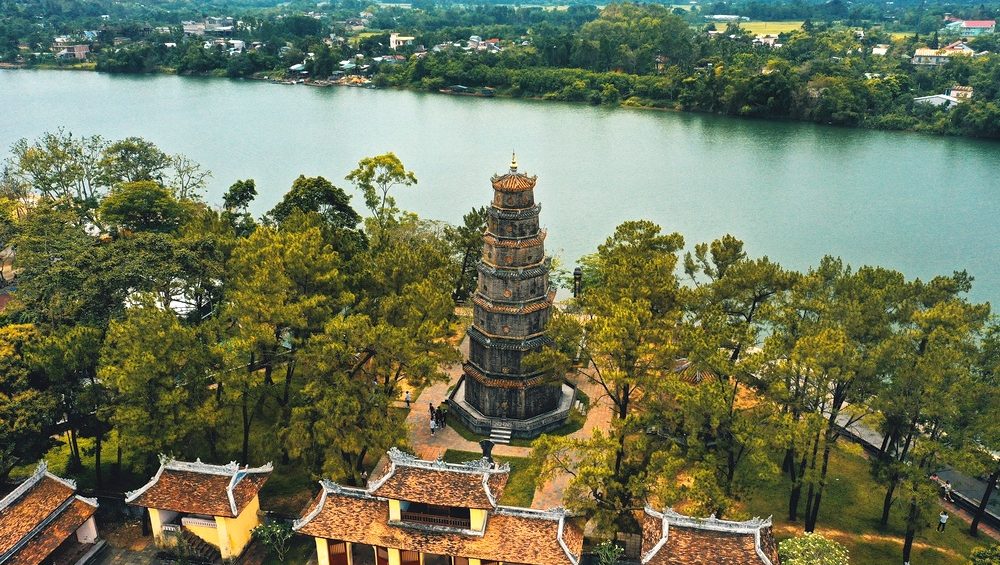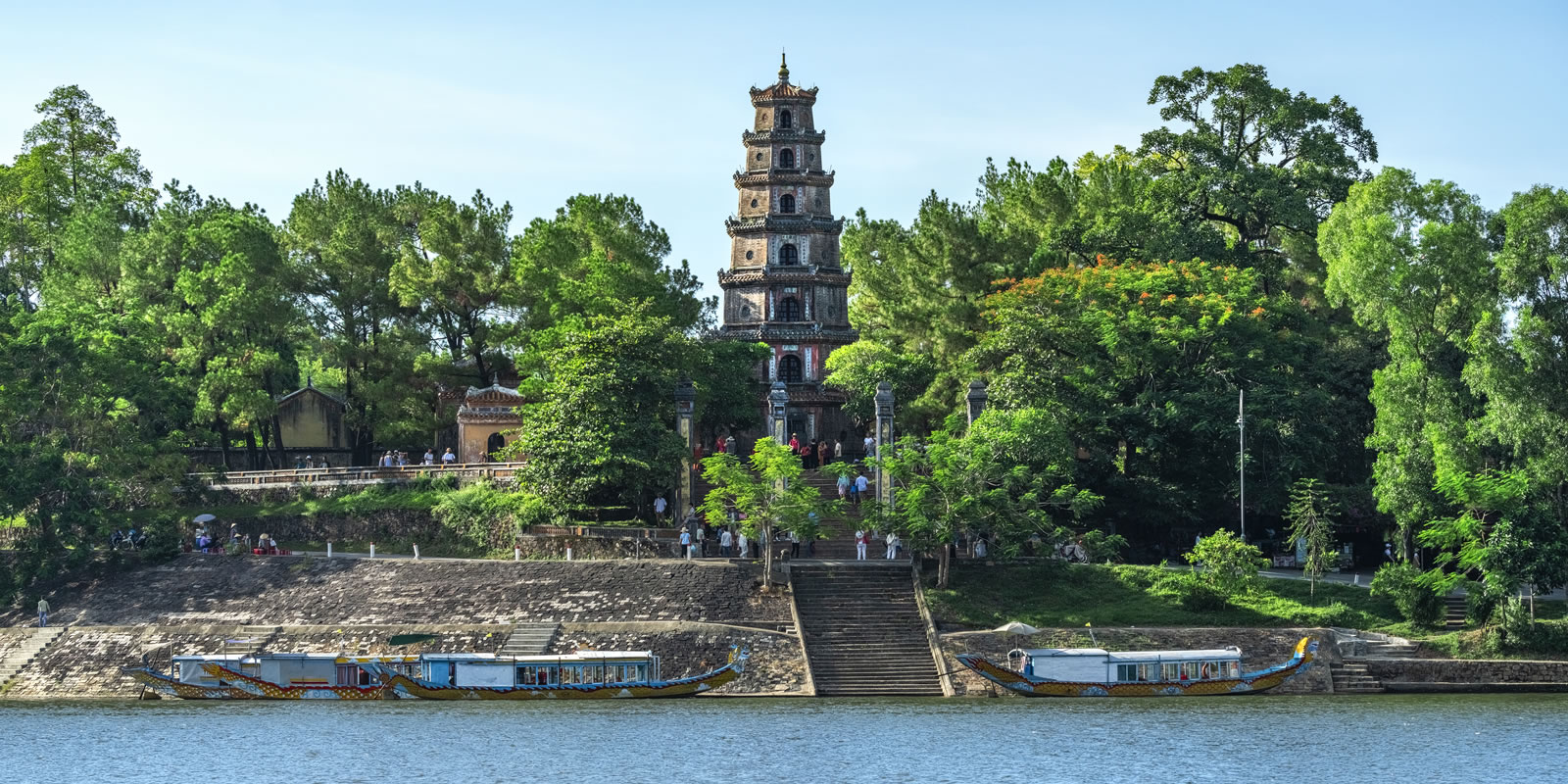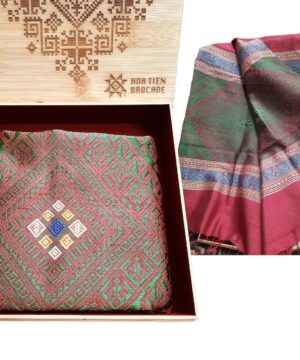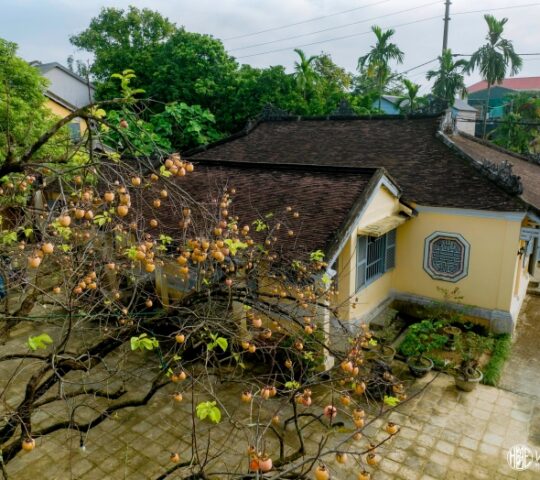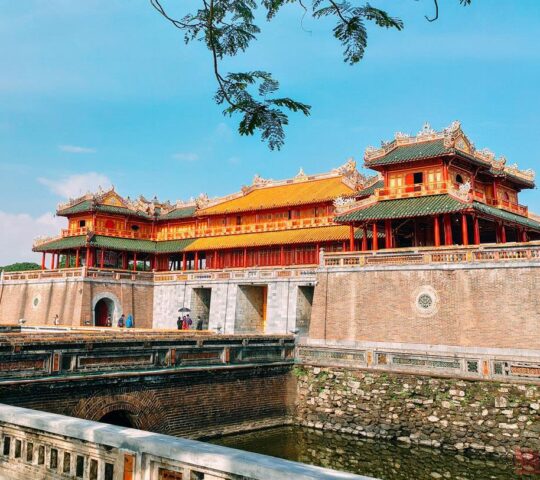Hightlight
-
 Car parking
Car parking
Nestled along the serene banks of the Perfume River in Hue, Vietnam, the Thien Mu Pagoda stands as a testament to the rich history and culture of this ancient city. This iconic pagoda is not only a spiritual sanctuary but also a captivating architectural wonder that draws visitors from all corners of the world. In this article, we will explore the enchanting world of Thien Mu Pagoda, delving into its location, history of construction and renovation, architectural features, and the vibrant festival that has been celebrated here for centuries.
Thien Mu Pagoda ‘s location
Thien Mu Pagoda, also known as the “Pagoda of the Celestial Lady,” is situated approximately 5 kilometers southwest of the Hue city center, overlooking the picturesque Perfume River. The pagoda’s location on Ha Khe Hill grants it a commanding view of the surrounding landscape, creating a tranquil and spiritually uplifting ambiance that visitors find enchanting.
History of Construction and Renovation
The history of Thien Mu Pagoda dates back to the early 17th century. The pagoda was founded by Nguyen Hoang, the first lord of the Nguyen Dynasty, who ruled over the region. However, the pagoda’s most iconic structure, the seven-story Phuoc Duyen Tower, was constructed much later in 1844 under the rule of Emperor Thieu Tri. The tower, also known as the “Pagoda of the Celestial Lady,” stands at an impressive height of 21 meters, symbolizing the ascent towards enlightenment.
Throughout its history, Thien Mu Pagoda has undergone several renovations, with each successive dynasty making their contributions. These renovations have helped preserve and enhance the pagoda’s architectural and spiritual significance. The pagoda has been meticulously maintained and remains a symbol of spiritual devotion in Hue.
Architecture
Thien Mu Pagoda is an exemplar of traditional Vietnamese Buddhist architecture. Its most prominent feature is the Phuoc Duyen Tower, a seven-story octagonal tower that stands atop a granite terrace. The tower’s elegant design and intricate carvings showcase the fusion of Buddhist and Vietnamese architectural styles, with a blend of Chinese and Vietnamese elements.
At the base of the tower, you’ll find a serene courtyard adorned with fragrant frangipani trees, ponds, and delicate bonsai plants. The whole complex is surrounded by a lush garden and further exudes a sense of calm and serenity. The pagoda’s architecture harmoniously integrates with its natural surroundings, creating a spiritual oasis for both tourists and devotees.
Festival at Thien Mu Pagoda
One of the most celebrated events at Thien Mu Pagoda is the Buddha’s Birthday Festival, or “Phat Dan” in Vietnamese. This festival is held annually on the eighth day of the fourth lunar month. The festivities are marked by colorful processions, prayers, and various rituals that draw a large crowd of local and international visitors.
During the festival, the pagoda is adorned with colorful decorations, and devotees come from far and wide to offer incense, flowers, and prayers to Buddha. It’s a time of deep spirituality, reflection, and unity among the community, and a chance for visitors to witness the vibrancy of Vietnamese religious traditions.
Visiting Thien Mu Pagoda during the Buddha’s Birthday Festival is a unique experience, allowing you to immerse yourself in the rich spiritual and cultural tapestry of Vietnam. The pagoda becomes a hub of positive energy and joy during this time, making it a memorable and photogenic moment for all who attend.
In conclusion, Thien Mu Pagoda in Hue, Vietnam, is not only a place of profound spirituality but also a living testament to the region’s rich history and cultural heritage. Its exquisite architecture, serene location, and vibrant festivals make it a must-visit destination for travelers seeking to delve into the heart of Vietnam. Whether you are a history enthusiast, architecture lover, or simply seeking a peaceful retreat, Thien Mu Pagoda offers an experience that will stay with you long after you leave its hallowed grounds.

